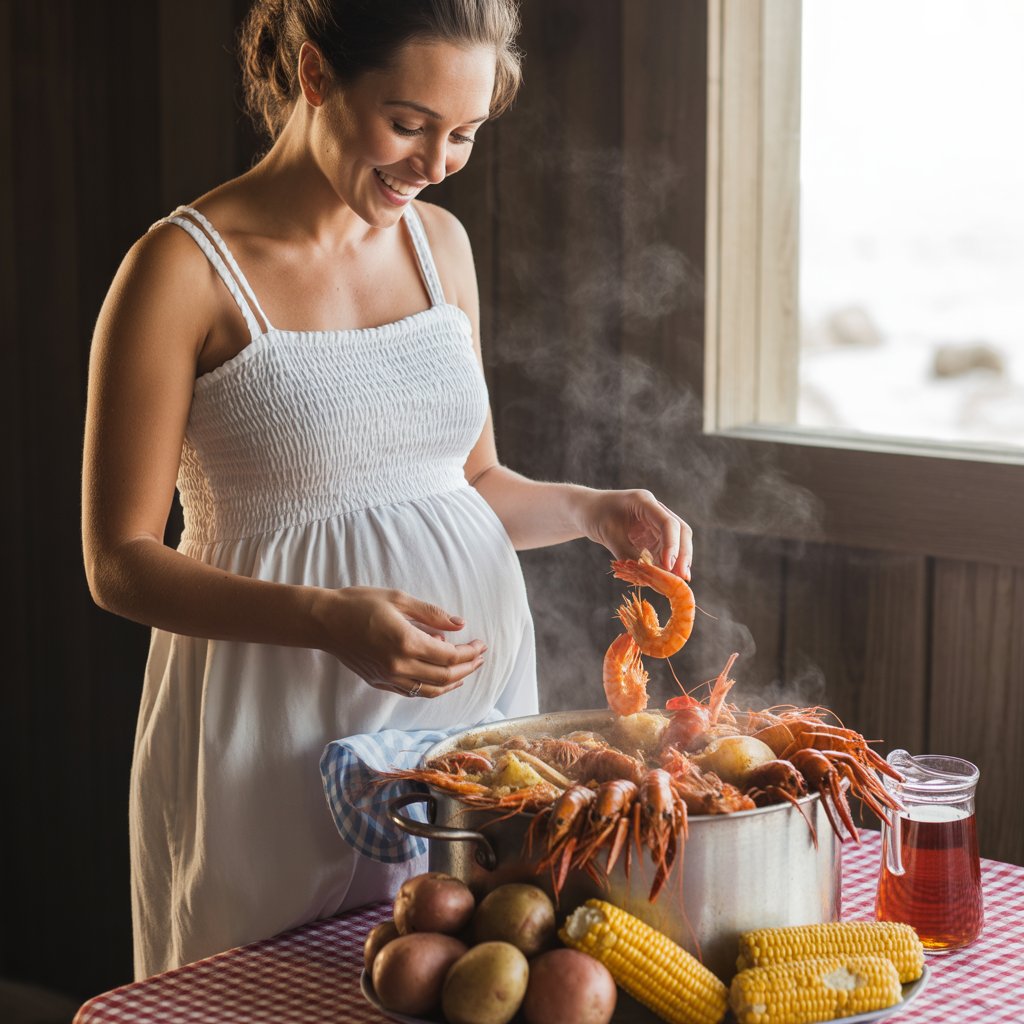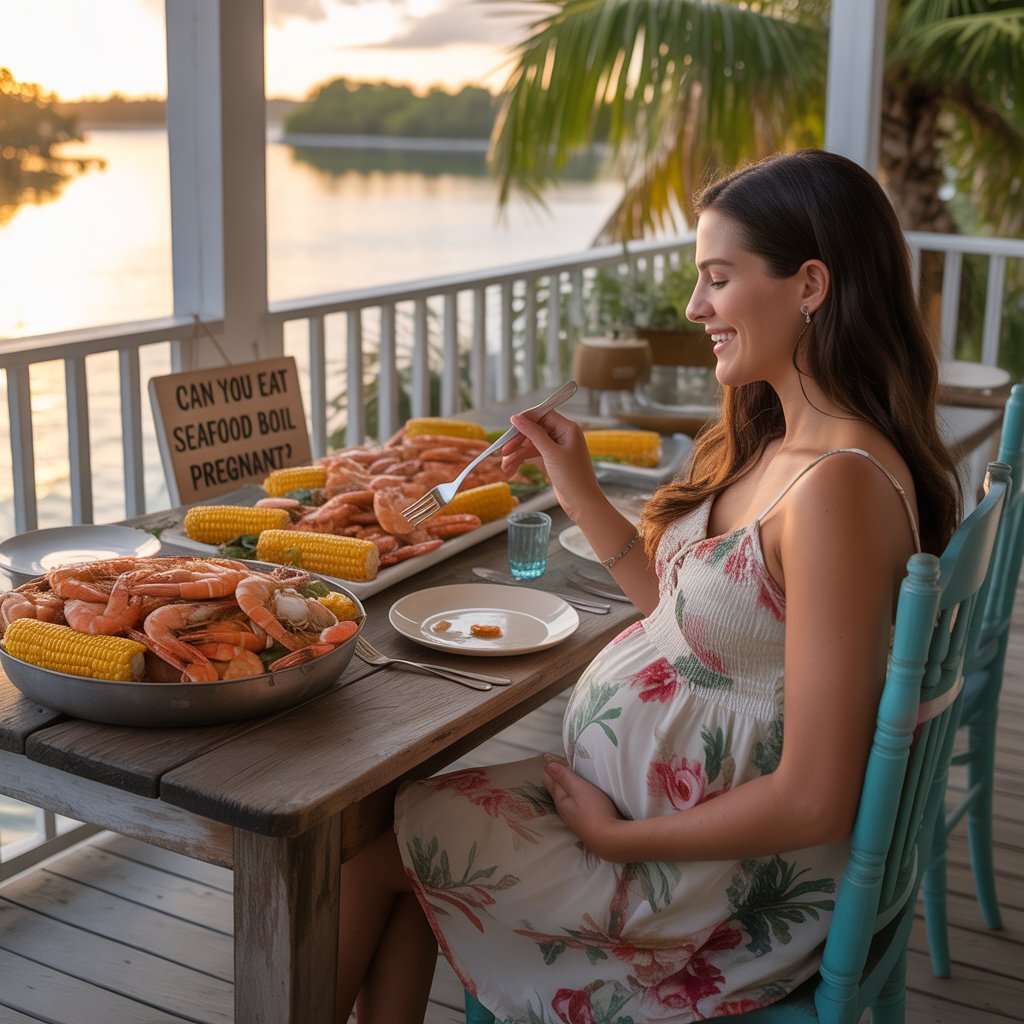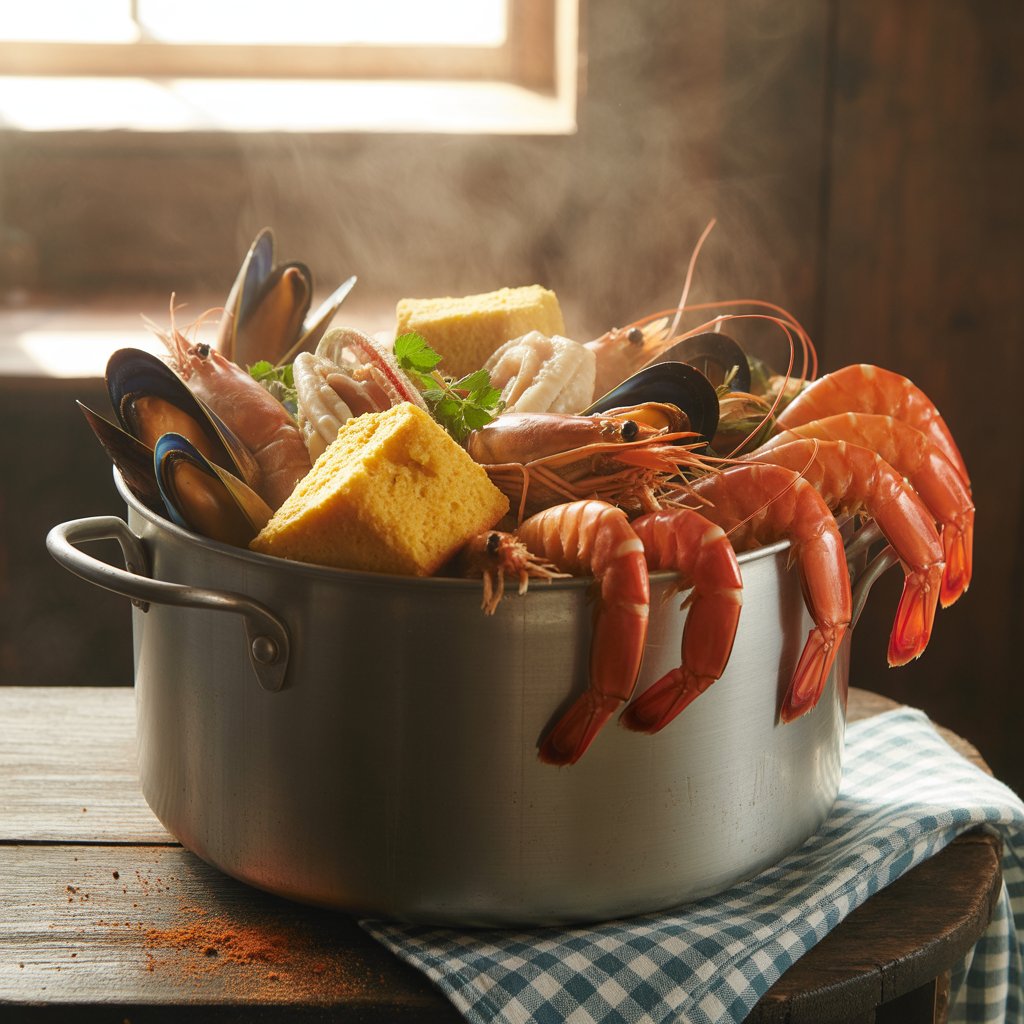Seafood boil is safe in pregnancy if all seafood is cooked well, low in mercury, and portion is limited.
- Eat only fully cooked seafood (no raw or undercooked).
- Prefer low-mercury options like shrimp, crab, crawfish, clams, mussels.
- Avoid high-mercury fish (king mackerel, swordfish, shark, tilefish).
- Safe limit: 8–12 oz of low-mercury seafood per week.
- Skip unpasteurized sauces or dips.
- Go easy on spices to prevent heartburn.
- Balance with vegetables, corn, and potatoes for a healthier meal.

Can You Eat a Seafood Boil Pregnant?
Directly address the keyword.
Mention avoiding raw/undercooked shellfish.
Emphasize that seafood boils can be safe during pregnancy if cooked properly.
Sprinkle in: seafood boil safety pregnancy, eating seafood boil during pregnancy.
What’s in a Seafood Boil?
A traditional seafood boil is more than just shellfish it’s a hearty mix of seafood, vegetables, and spices cooked together in one pot. These shellfish are generally considered low-mercury seafood, which makes them a safe choice during pregnancy when fully cooked.
Nutritional Benefits of Seafood for Pregnancy
When people ask “Can you eat a seafood boil pregnant?” they’re often focused on safety, but it’s just as important to understand the nutritional benefits. Seafood, when chosen wisely, is one of the most valuable foods an expectant mother can include in her diet.
Many of the shellfish commonly found in a seafood boil such as shrimp, crab, and lobster are excellent sources of lean protein, which supports the growth of both mother and baby. These foods are also rich in iron, a mineral that helps prevent anemia, and zinc, which aids immune function. In addition, seafood provides iodine, essential for healthy thyroid function during pregnancy.
How to Safely Enjoy a Seafood Boil While Pregnant .
If you’ve been wondering, “Can you eat a seafood boil pregnant?” the reassuring answer is yes—but only if it’s prepared with safety in mind. Pregnancy changes the way your body responds to bacteria, viruses, and even certain nutrients, so extra care is needed when it comes to seafood. A boil can still be a flavorful, satisfying meal if you follow a few key precautions.

1. Choose Low-Mercury Seafood
The foundation of a safe seafood boil is selecting the right types of seafood.
Stick to low-mercury shellfish and fish such as shrimp, crab, lobster, crawfish, clams, tilapia, cod, salmon, and catfish. These options provide important nutrients like protein, iron, zinc, iodine, and omega-3 fatty acids without exposing you or your baby to harmful mercury levels.
2. Cook Thoroughly and Consistently
Cooking seafood to the right temperature is non-negotiable. Shrimp, crab, and lobster should turn opaque and firm. Use a food thermometer to ensure seafood reaches 145°F internally. If you’re reheating leftovers, bring them to 165°F before eating. This step reduces the risk of foodborne illness, which can be especially serious during pregnancy.
3. Prevent Cross-Contamination
Cross-contamination is often overlooked but is just as important as cooking. Use separate cutting boards and utensils for raw seafood and ready-to-eat items. Wash your hands, knives, and counters thoroughly after handling raw shellfish. During a boil, make sure raw seafood never comes into contact with cooked potatoes, corn, or sausage.
4. Mind the Seasonings and Add-Ins
Part of the fun of a seafood boil is the bold seasoning Old Bay, Cajun spice blends, garlic butter, and generous amounts of salt. However, during pregnancy, too much sodium can contribute to swelling, water retention, or elevated blood pressure. Heavy spice may also trigger heartburn, a common complaint among expectant mothers.
5. Portion and Frequency Matter
Even with safe seafood, moderation is key. Health organizations recommend 8 to 12 ounces of low-mercury seafood per week, spread across two or three servings. That might look like one medium seafood boil and another meal with grilled salmon or baked cod.
6. Handle Leftovers Carefully
Seafood spoils quickly if not stored properly. If you plan to save leftovers, refrigerate them within two hours of cooking and eat them within one to two days. Always reheat to 165°F before serving again. Never leave seafood sitting out at room temperature, as bacteria can multiply rapidly.
7. Buy From Reputable Sources
Pregnancy isn’t the time to take chances with questionable seafood. Purchase shellfish and fish from reliable markets that follow food safety standards. If you’re eating out, choose restaurants known for cleanliness and ask how their seafood is sourced and cooked.
FAQs About Eating a Seafood Boil While Pregnant
1. Is it safe to eat a seafood boil during pregnancy?
Yes, it’s safe if the seafood is fully cooked and made with low-mercury options like shrimp, crab, crawfish, and lobster.
2. What seafood should I avoid in a boil when pregnant?
Avoid high-mercury fish such as shark, swordfish, king mackerel, tilefish, and bigeye tuna.
3. Can I eat shrimp, crab, and crawfish in a seafood boil while pregnant?
Yes, these are low in mercury and safe to eat when cooked thoroughly.
4. How much seafood from a boil can I eat while pregnant?
The FDA recommends 8–12 ounces (about 2–3 servings) of low-mercury seafood per week.
5. Are spicy seasonings in a seafood boil safe during pregnancy?
Yes, spices are safe, but they may trigger heartburn, indigestion, or stomach discomfort.

